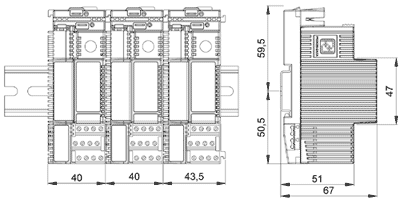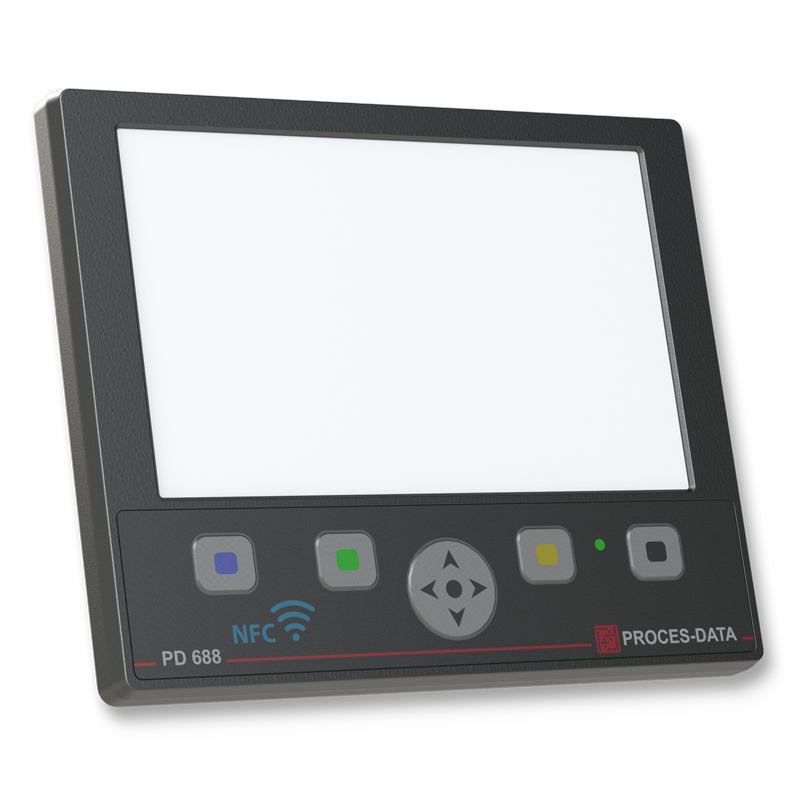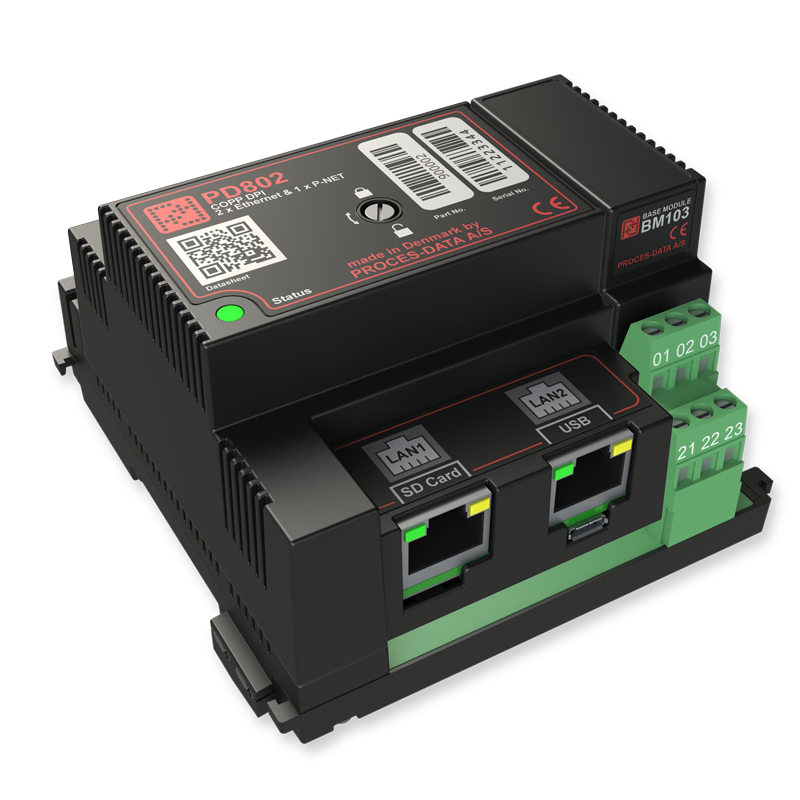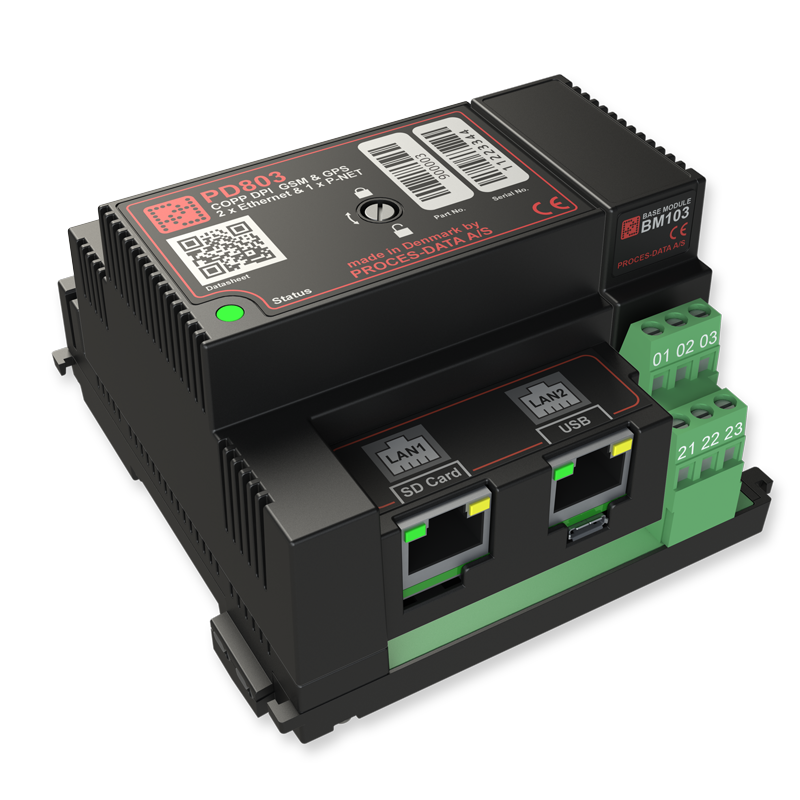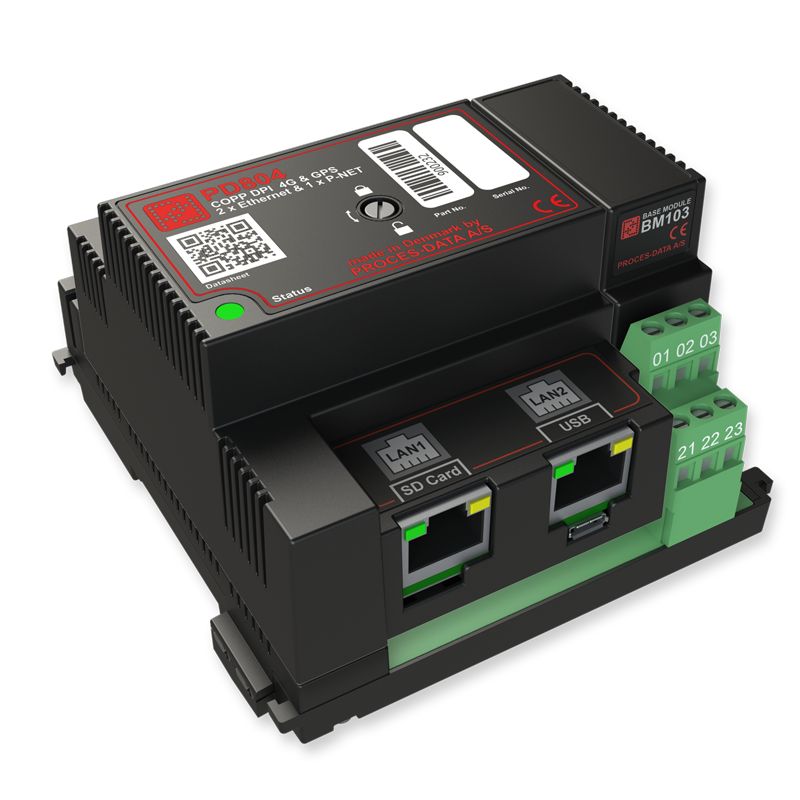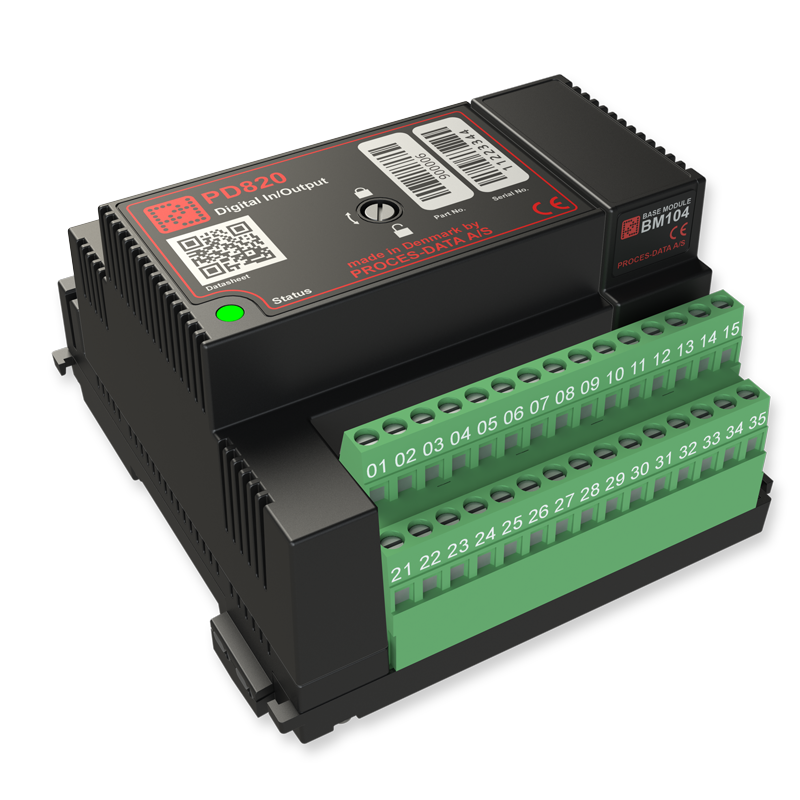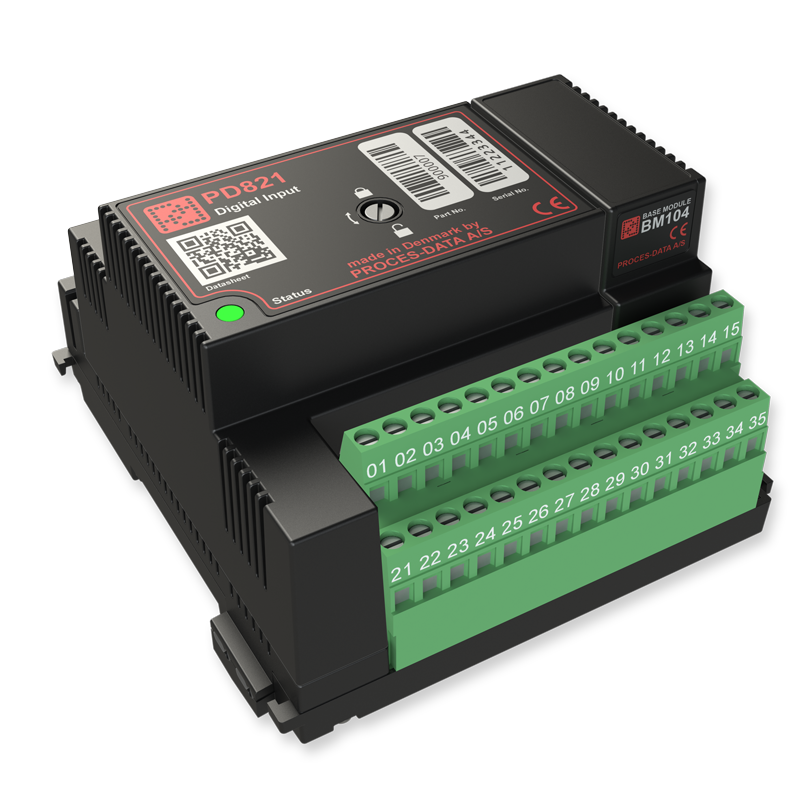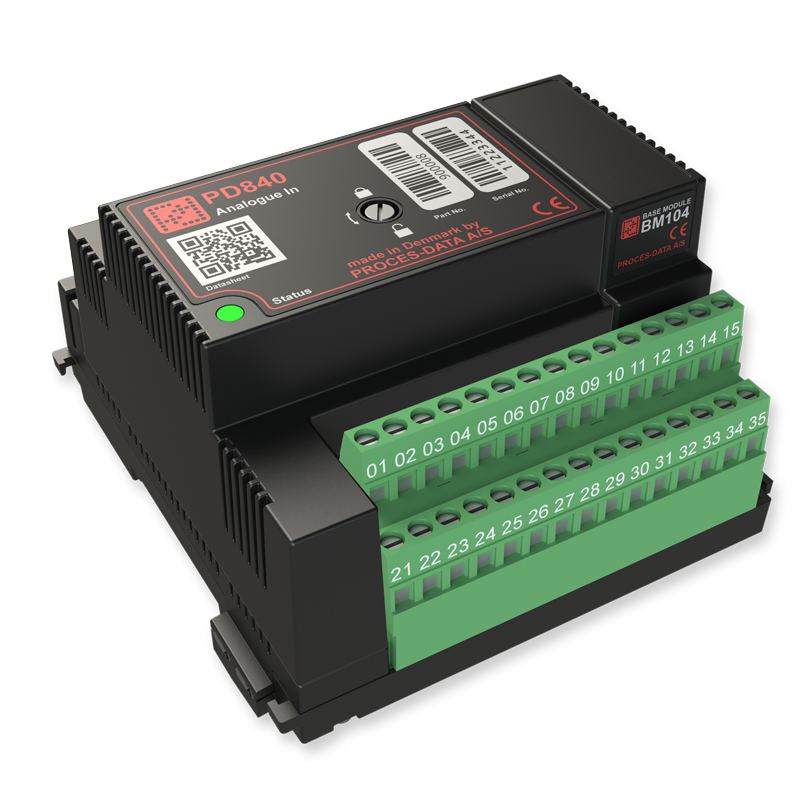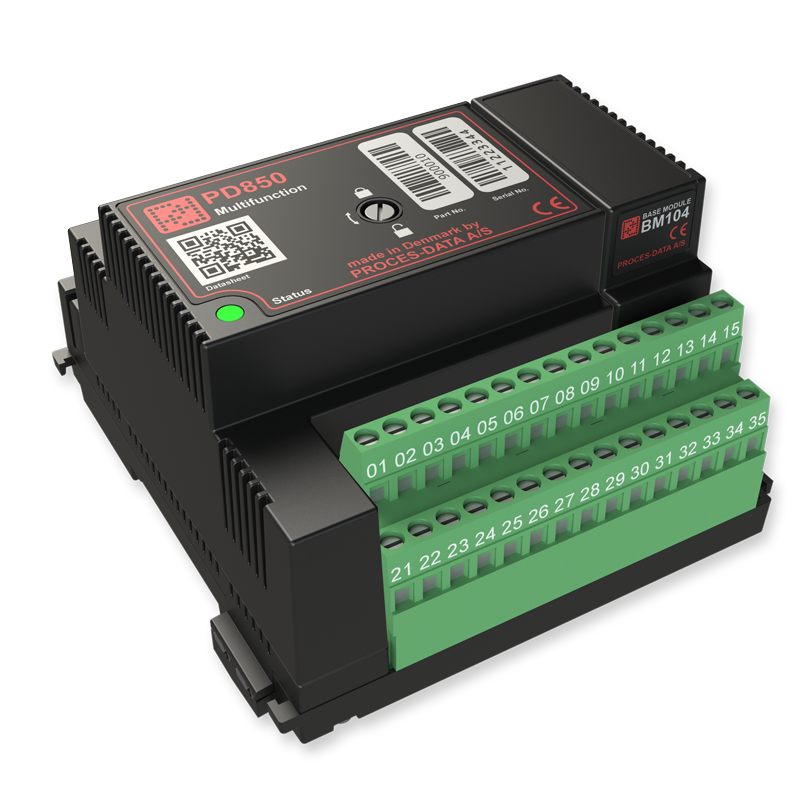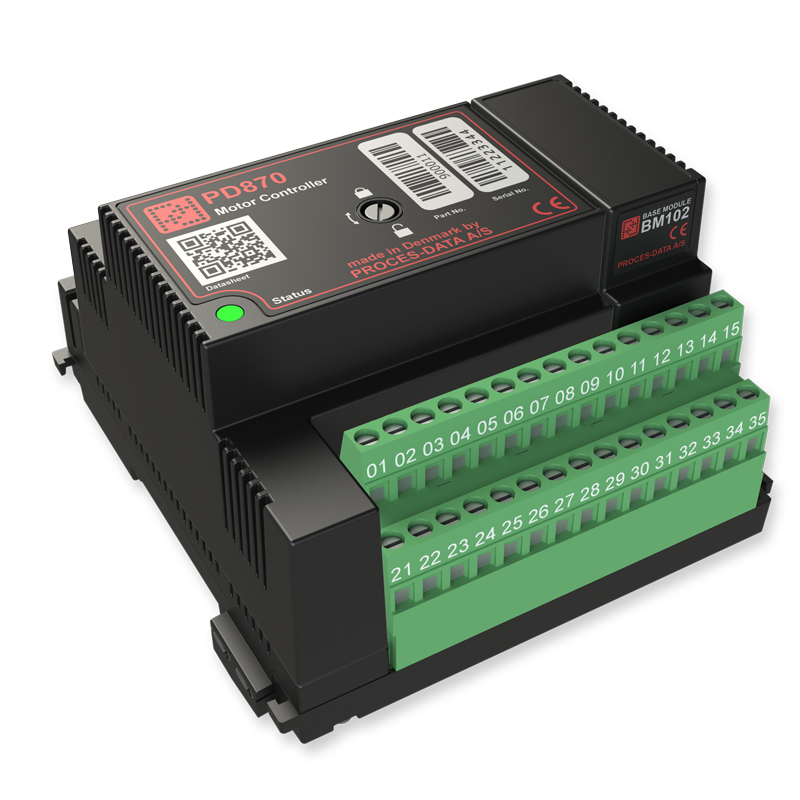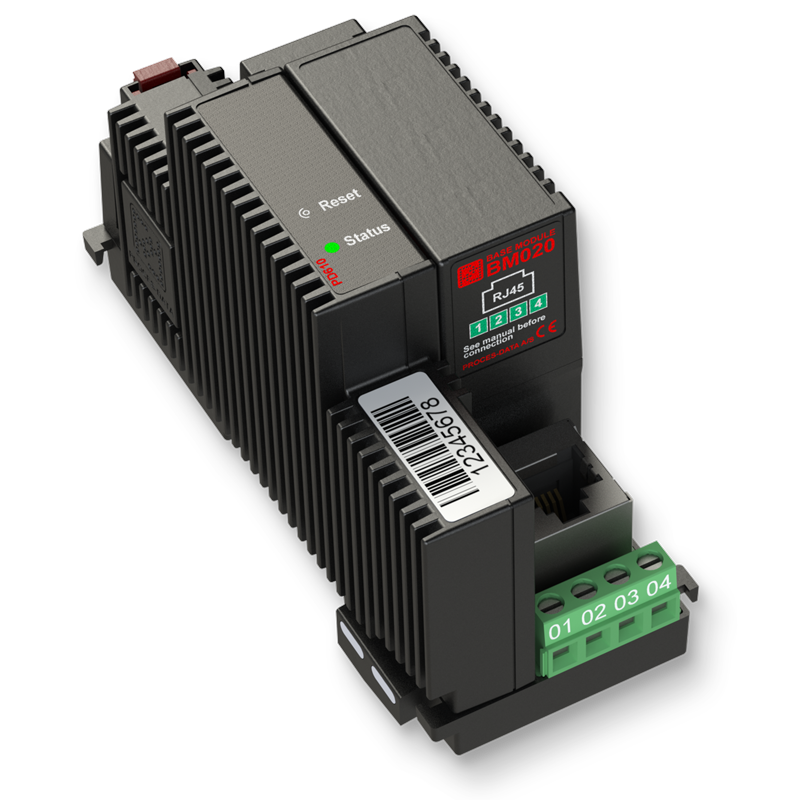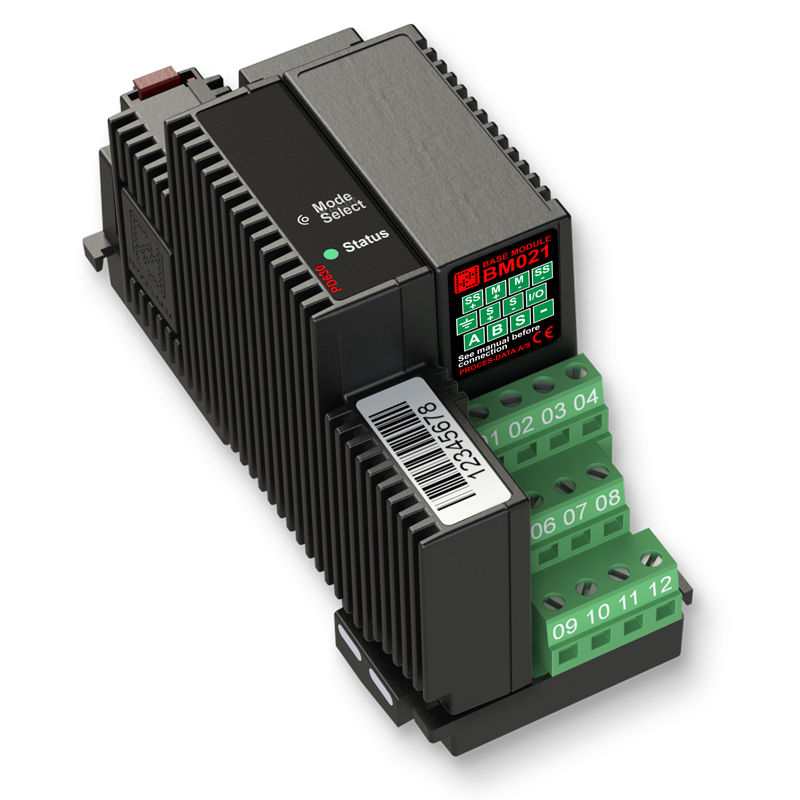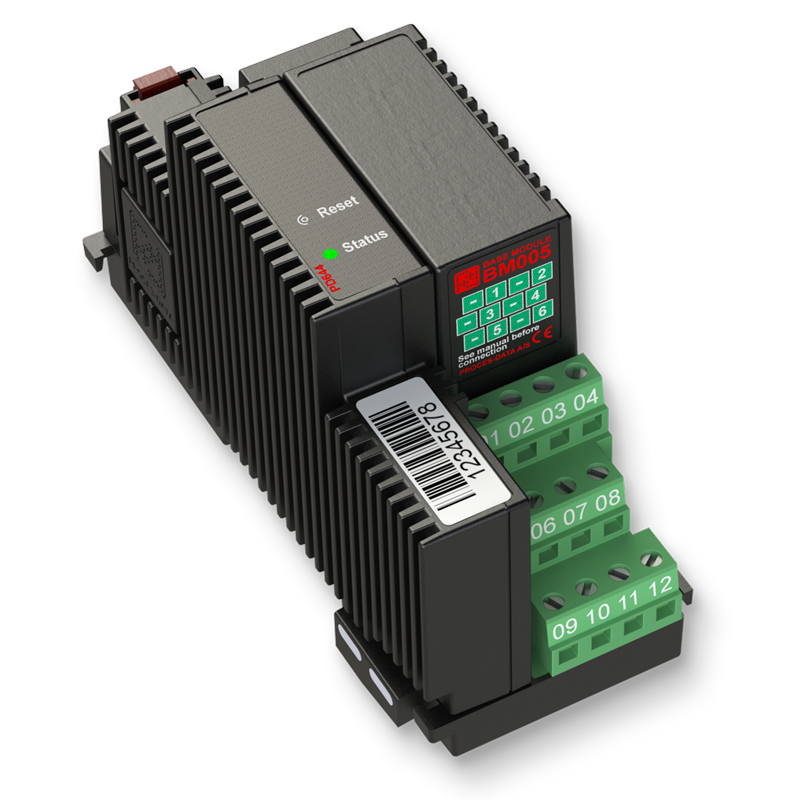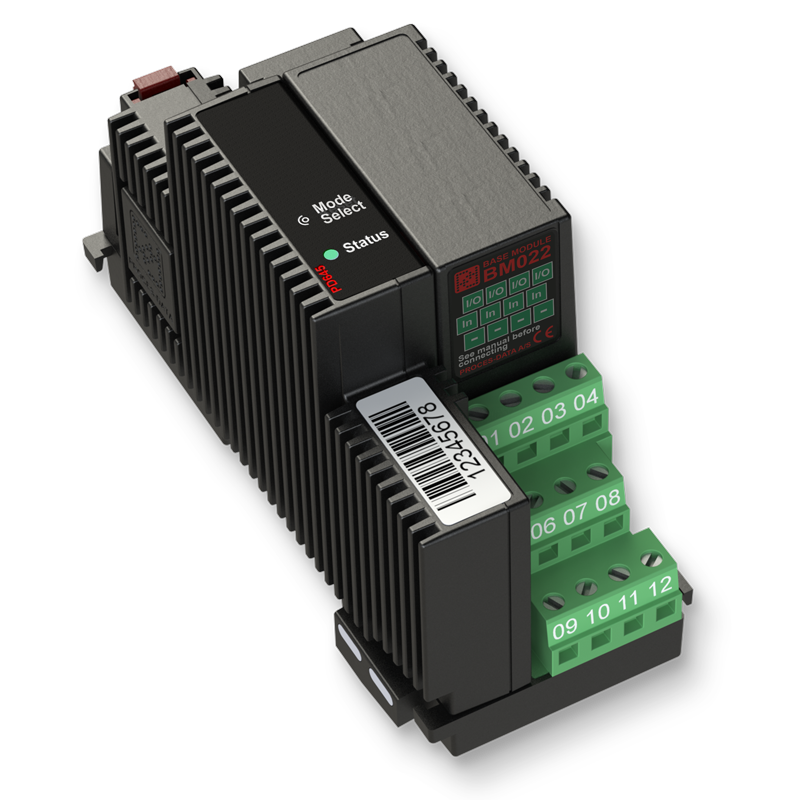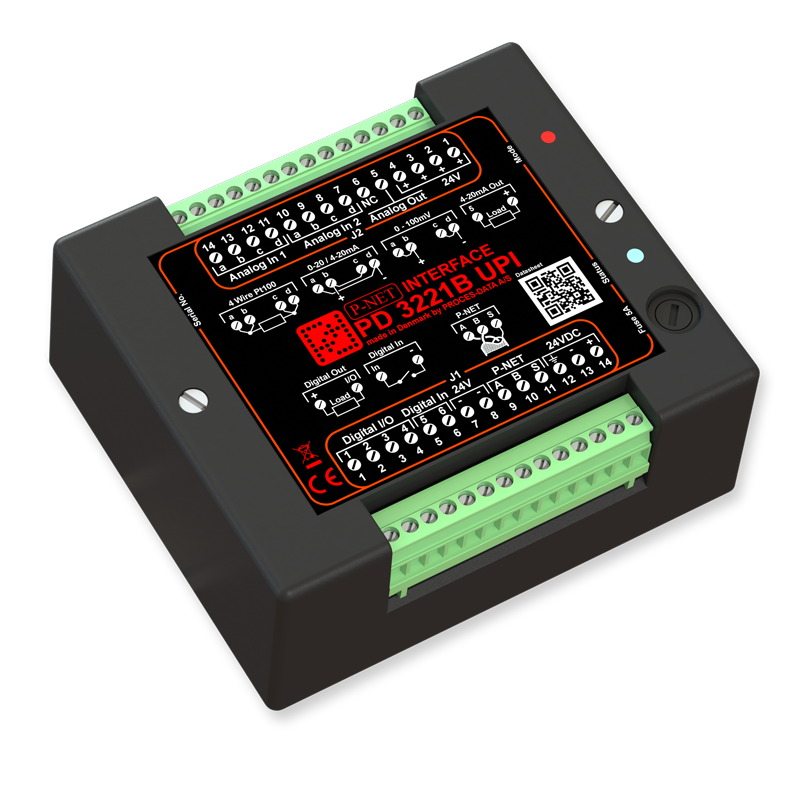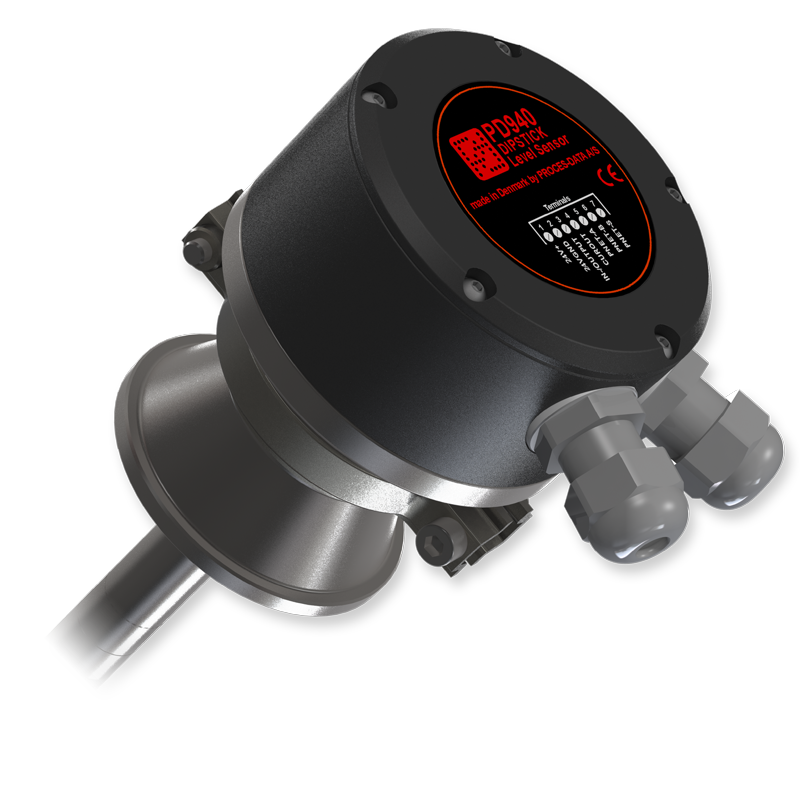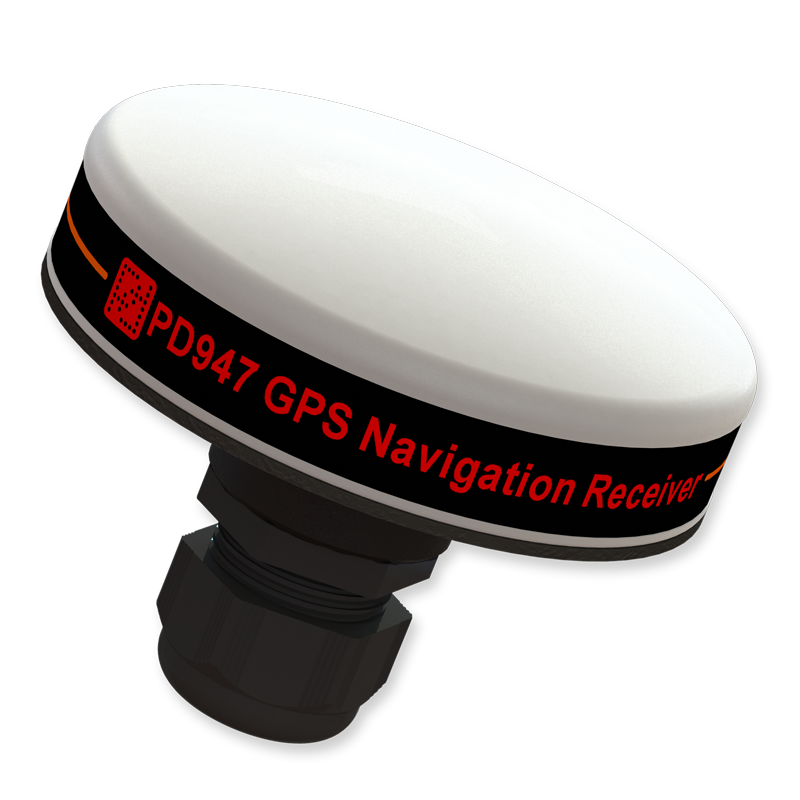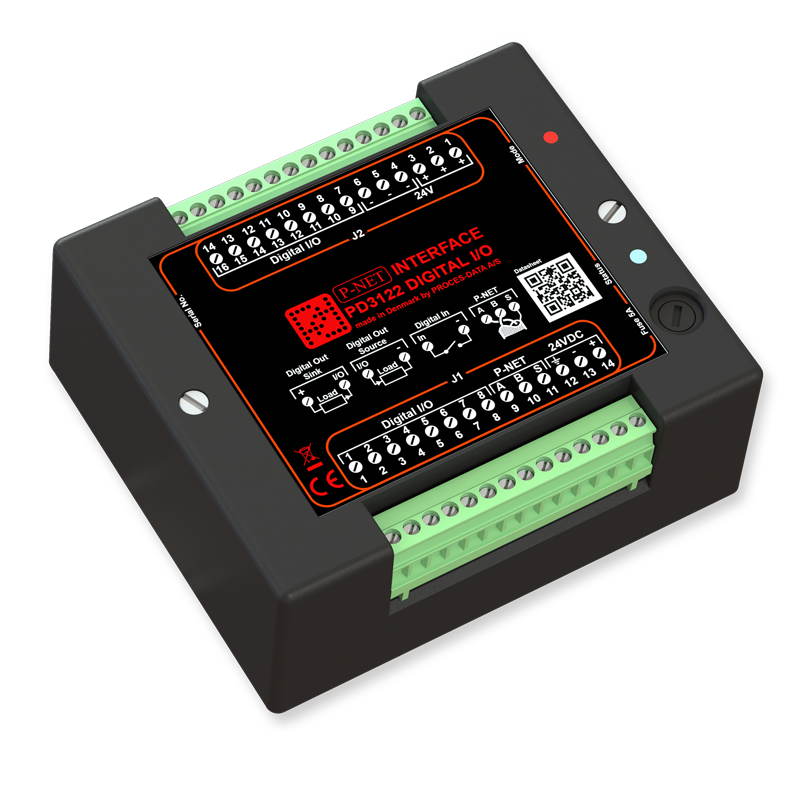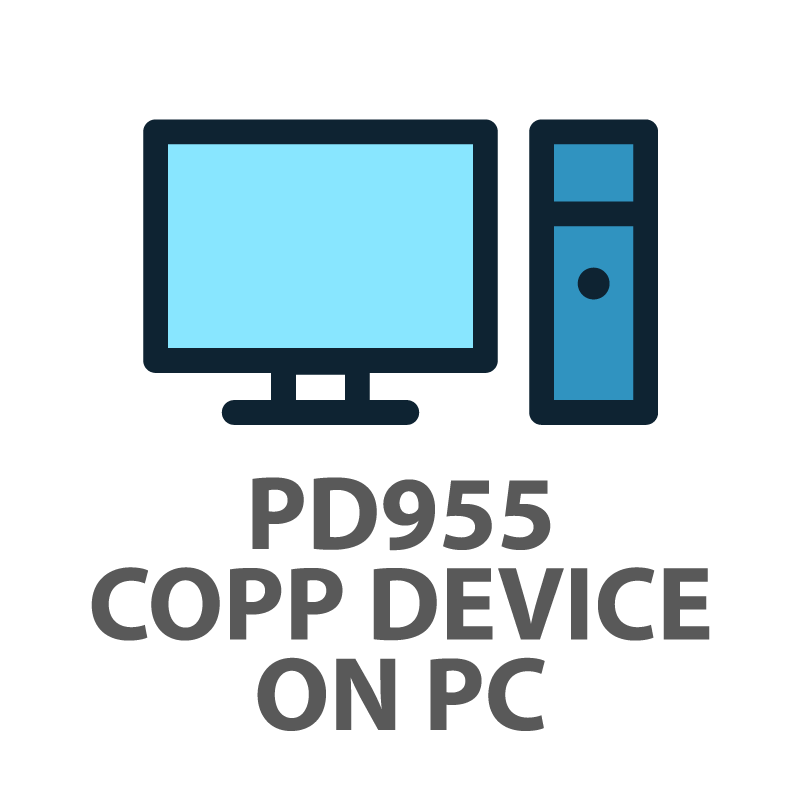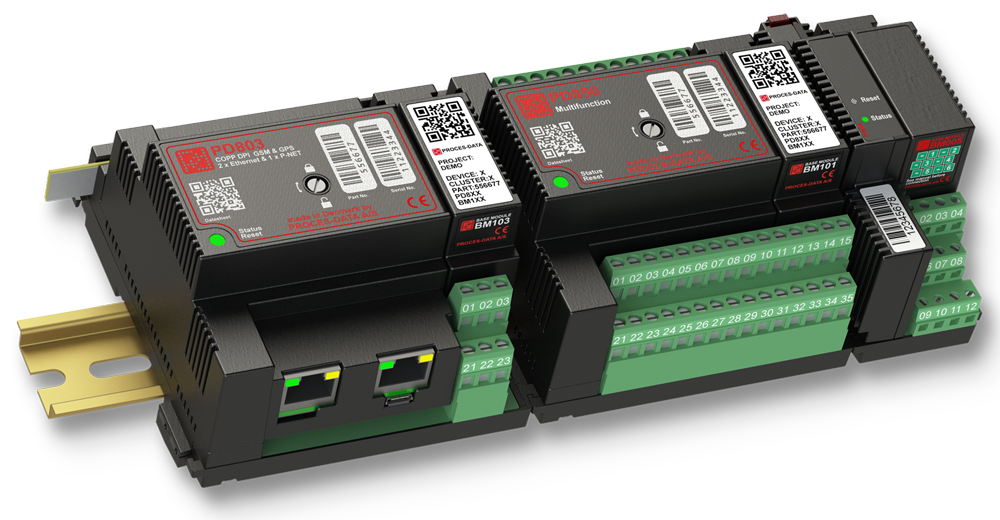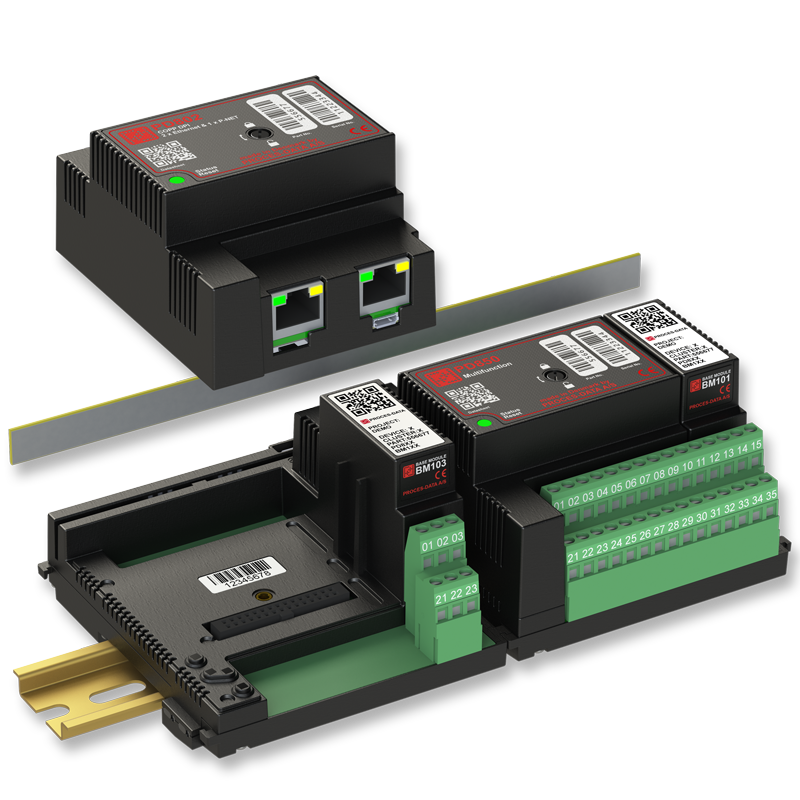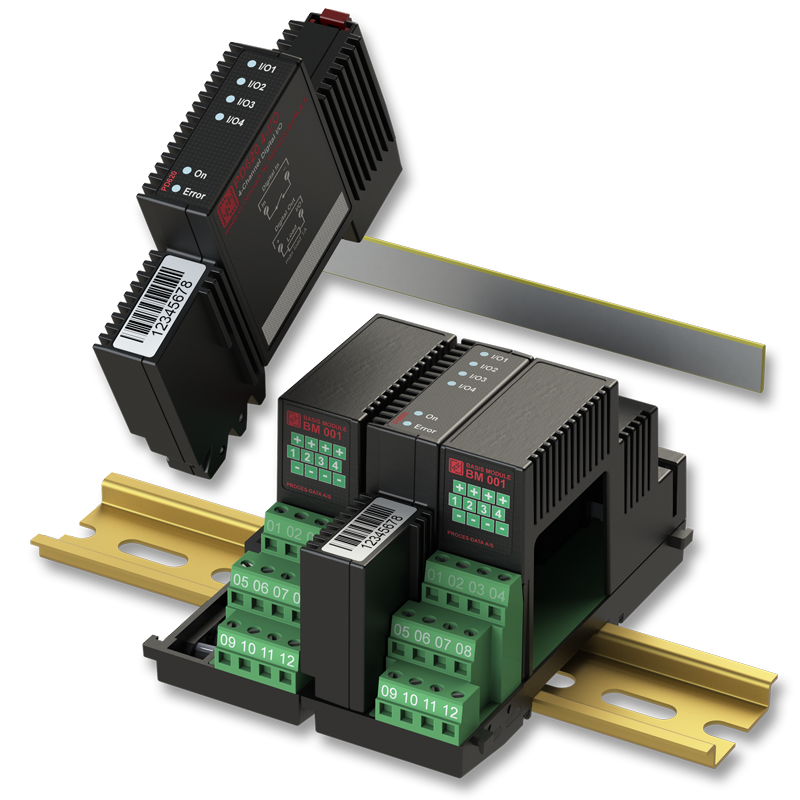COPP Modules
PD600 and PD800 Series
Introduction to the COPP enabled modules
The COPP Series modules have been designed as a complete range of versatile and flexible P-NET modules, consisting of I/O and multifunction I/O modules, transmitters, communication modules, colour touch display and process automation controllers. COPP modules are programmable in COPP by the use of VIGO6 – The integrated development environment for process control.
COPP family
The COPP family consists of the PD 800 Series, a selection of PD 600 Series modules including analogue I/O modules, one of them with HART communication interface, level sensor PD 940 Dipstick, PD 947 GPS Navigation Receiver, PD 440 Flow Transmitters etc. Please consult the individual data sheet for more information.
PD688
PD802 COPP DPI
PD803 COPP DPI GSM GPS
PD804 COPP DPI 4G & GPS
PD820 15 CH. DIGITAL I/O
PD821 15 CH. DIGITAL IN
PD840 15 CH. ANALOGUE IN
PD850 MULTIFUNCTION I/O
PD870 MOTOR CONTROLLER
PD610
PD630
PD644 Analogue I/O – HART
PD645
PD3221B
PD940 DIPSTICK
PD947
PD3122
PD955 COPP DEVICE ON PC
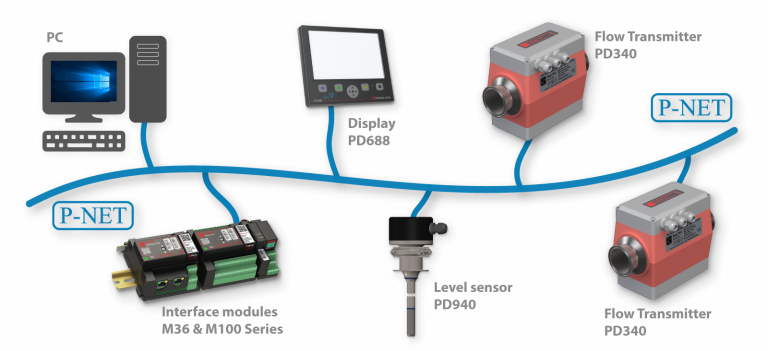
General features
– COPP modules are programmable and feature P-NET master functionality
– COPP Digital and Analogue I/O modules feature advanced functionality
– I/O modules can be mounted close to the process unit, eliminating the need for marshalling panels, homerun cables and reducing or eliminating field auxiliary rooms.
– The PD 800 Series of Distributed Process Intelligence – DPIs, for use as high performance distributed computing elements within highly complex as well as simple automation systems.
Another term for this type of device is Programmable Automation Controller, often referred to as PAC.
– HMI – PD 688 Display, features colour touch display, a number of communication interfaces, digital I/Os, RFID Reader, Micro SD-card slot, battery for backup etc.
– HMI – PD 955 COPP PC, operation/visualisation on PC running Microsoft Windows operation system
Features - COPP modules, PD 800/600 Series
– Modular design
– M100/M36 DIN rail format for convenient mounting and housing
– M100/M36 can be mounted on the same DIN rail
– Intelligent terminal block, eliminating additional wiring within the control panel or mounting box
– Two-part construction – electronics module and base module
– Adjacent modules communicate via P-NET using built-in fibre optics
– Electronics can be exchanged without interfering with power or terminal wiring (hot swap)
– Common clip-in power rail eliminates inter-module wiring
– Single side wiring with no common terminals
– ‘User label’ displays the module ID and the module position in the plant
Innovative Design
The philosophy behind this innovative range of modules is to provide the systems designer with a highly flexible means of constructing a local cluster of I/O modules, consisting of a single or multiple intelligent and programmable units.
Clusters with Ethernet interface
Each cluster would include a PD 610 Gateway module or a PD 80x DPI used to provide connection between Ethernet and Light-Link P-NET. Thereafter, virtually any number of I/O modules of any desired type can be clipped together to form the local requirement. Additionally, further DPI modules may be included, each of which could provide one or two P-NET (RS485) connections, one or two Ethernet (100 Mb/s) connections, USB interface, Micro SD card for data storage, battery for backup, etc.
The DPI module is programmable, which means that a part of, or complete automation application can be built and downloaded by the user.
Distributed control reduces the influence of a malfunction to a limited area, letting the remaining plant continue working.
Clusters with RS485 interface
Each cluster would normally include one “Simple” P NET Interface module. This provides a connection between RS485 P-NET (the rest of the system) and Light-Link P-NET, which is the means of fieldbus communication between the local modules. Thereafter, virtually any number of I/O modules of any desired type can be clipped together to form the local requirement.
Cluster consisting of: PD 803 DPI, PD 850 Multifunction and PD 644 Analogue input module with HART communication interface.
– PD 803 DPI. Communication: Ethernet: 10 Base-T / 100 BASE-TX, – P-NET RS485: 76.8 kbit/s, P-NET Light-Link: 76.8 kbit/s/230.4 kbit/s
– PD 850 Multi Function module, PD 644 PD 644 Analogue input– HART. Communication: P-NET Light-Link: 76.8 kbit/s/230.4 kbit/s
P-NET Light-Link
P-NET Light-Link provides an optical communication link for P-NET.
P-NET Light-Link is the means of communication between 800/600 series modules.
In P-NET networks, where all devices are interconnected exclusively by Light-Link, communication speeds of up to 230.4 kbit/s are permitted. This is 3 times the normal P-NET speed when compared to using standard RS485 connections.
Light-Link provides galvanic isolation between each member in a communication chain.
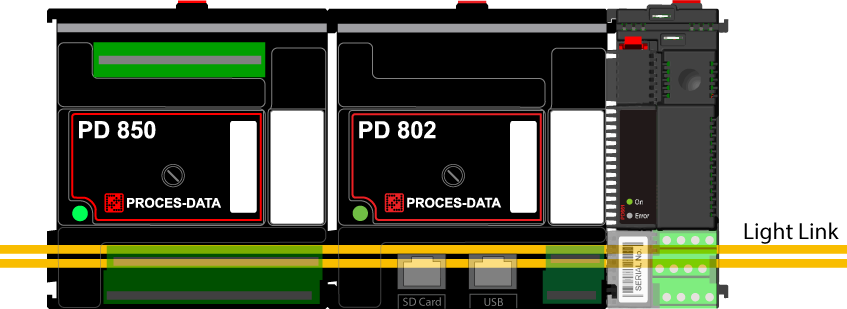
Minimum Wiring
Due to their unique construction, individual Base Modules are simply mounted side by side on the DIN rail. However, there is no need to perform any communication wiring between them, because this is achieved using multi-path fibre optic pipes, mounted on each side of every module. Furthermore, once the number of modules required has been mounted, power to each is provided by clipping in a single Power Rail strip, thus eliminating further wiring. Due to the construction philosophy of reserving one terminal for each external wire, no additional wiring is required within the installation box or mounting panel.
The module itself is an intelligent terminal block that enables direct connection of external signals without using a common terminal strip, which would traditionally have to be mounted in the bottom of the control panel.
Construction
PD 800 Series modules are made up of two parts – the electronics and the base module holding the terminals. The electronics block also mounts the I/O, power and a three-coloured LED, and can be removed from the base module even when power is applied, and without interfering with the operation of the rest of the cluster (hot-swapping).
Terminals are stacked on one side, for easy access and minimum wiring area, and are designed for one wire per terminal. Modules may be equipped with a third row of terminals intended for high power purposes. The elimination of “common” terminals means that any transducer/sensor/ actuator can be added/removed without affecting the connection of any other. The upper surface of the terminal part provides a means to attach a customised label relevant to the operation of the module, thus aiding wiring, commissioning and maintenance.
Versatility
The COPP modules, i.e. the PD 800 Series, consist of a versatile mixture of both standard input/output and special modules, and additional modules will be regularly added to the family. Coupling this with the option of adding local programmability and gateways ensures that the Multi-master, Multi-net facilities offered by the P NET Fieldbus protocol can be fully utilised. Due to the fact that each module offers a limited number of channels, local clusters can be designed in such a way that it reduces unused channels to a minimum.
Environmental Factors
Physically, the modules are designed to operate within a wide range of industrial static or mobile environments, with a nominal power requirement of 24 Volts DC (min. 12 V, max. 32 V – see individual specifications), including polarity reversal protection, and an operating temperature range of –25 °C to +70 °C.
The module casings are moulded using UL approved plastic.
The module design is ideally suited for mounting within standard industrial or domestic contact breaker boxes having an integral DIN rail and transparent access window.
Usage
The compact nature and exceptionally wide power supply and environmental characteristics of the COPP modules, the PD 800/600 Series, make them ideal candidates for both machine and wide area plant use, as well as for stand-alone Fieldbus transmitters. The ability to form customised and programmable clusters of modules for distributed location around a plant or building provides a virtually infinite variation of system designs. Furthermore, interconnection by means of P-NET means that these series of modules can be added to already installed P-NET systems using modules from other families.
P-NET Ethernet example
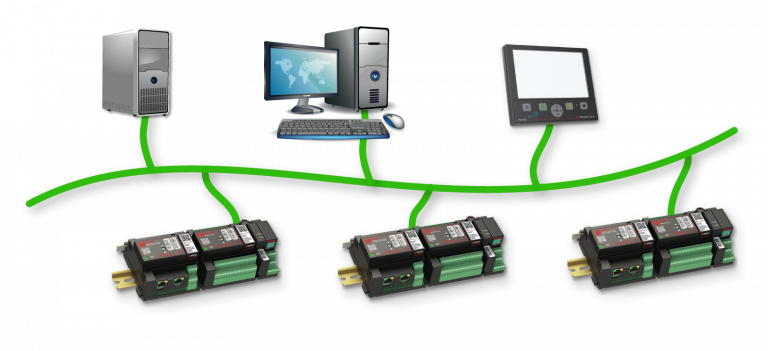
M100 Series

M36 Series
